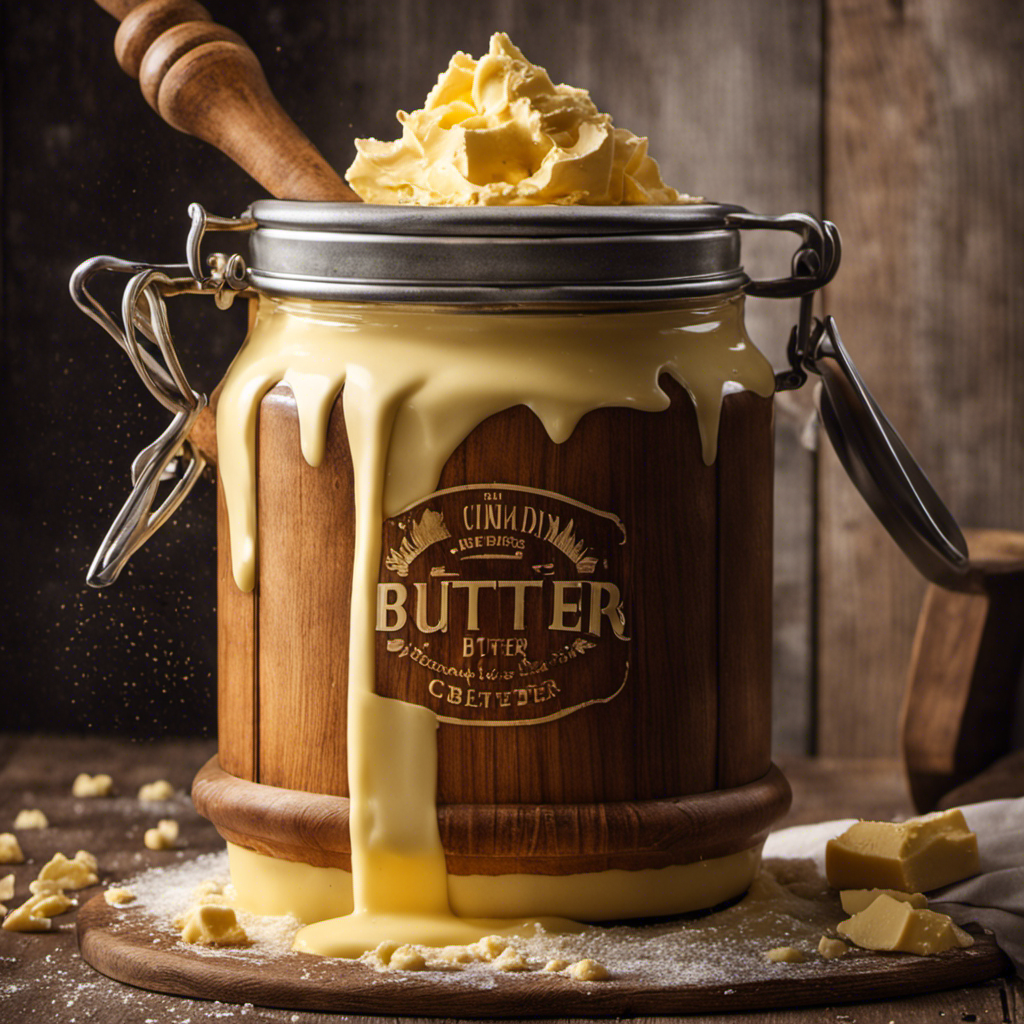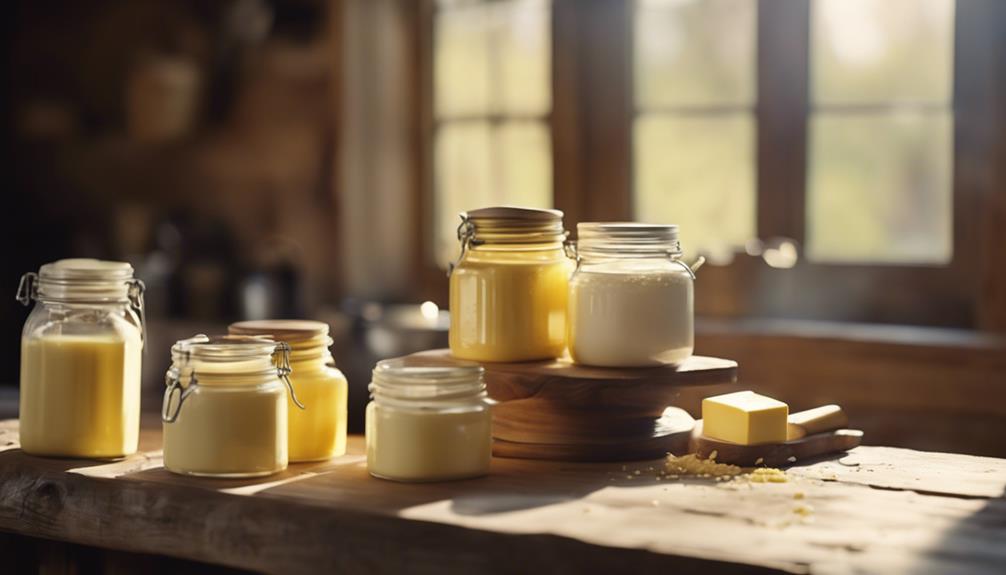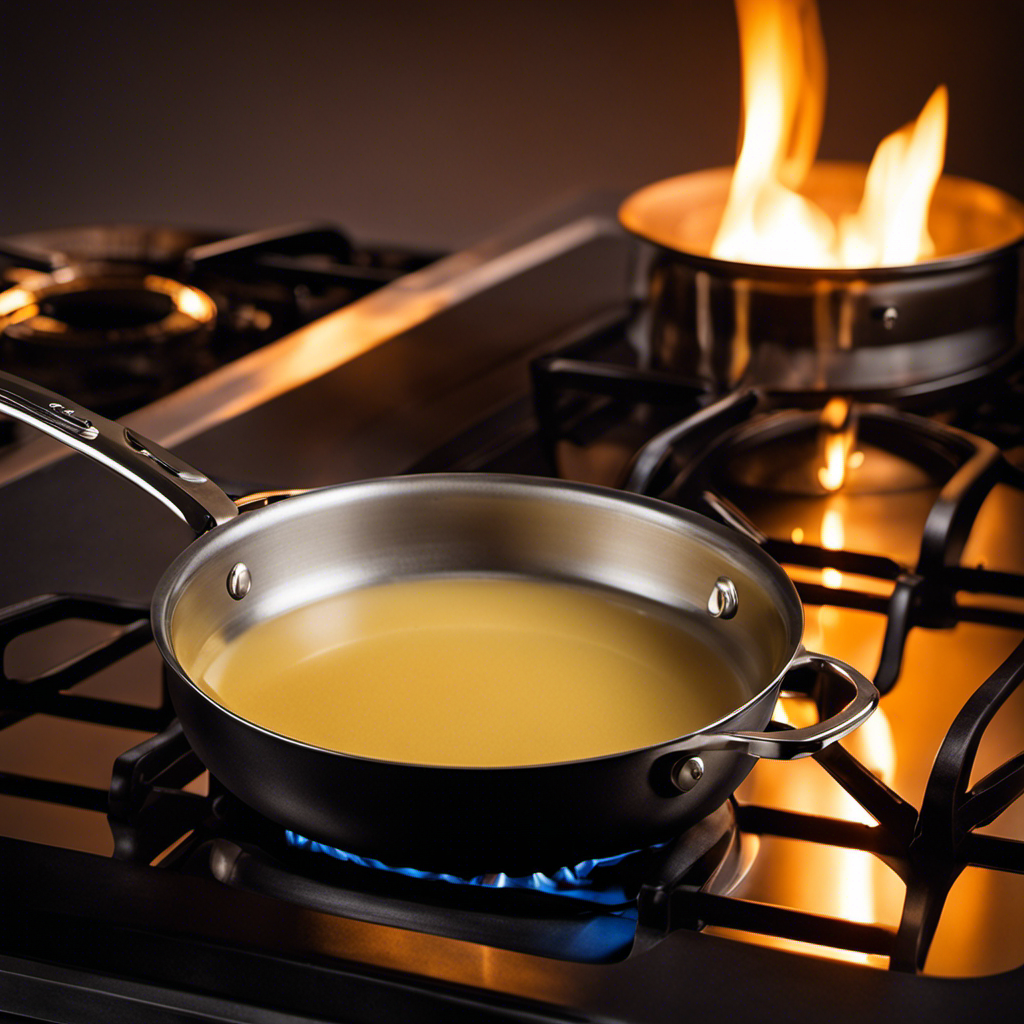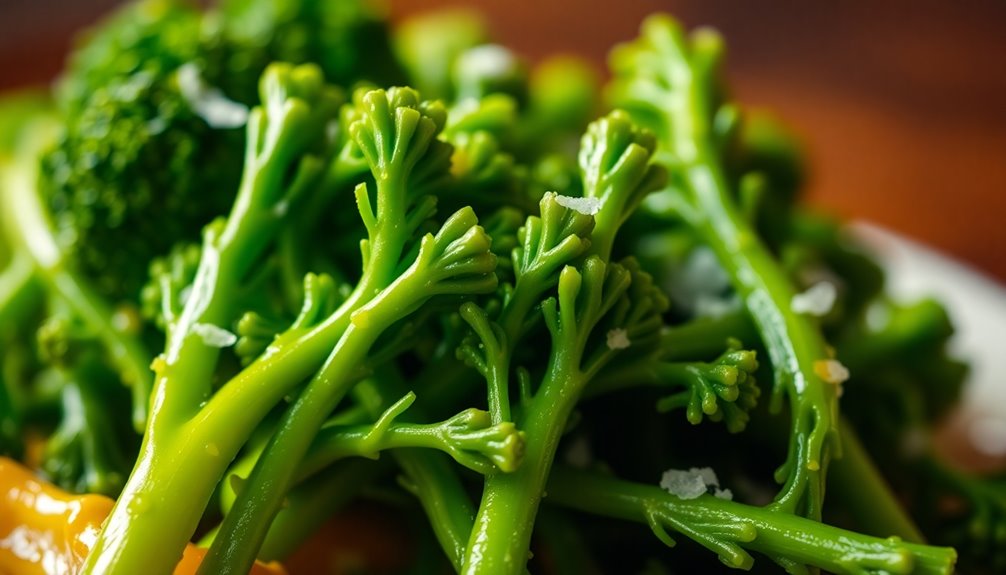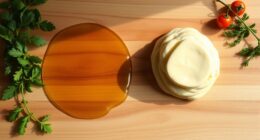Looking to elevate your culinary creations? Look no further, as cultured butter is here. This luxurious, golden ingredient is the secret weapon that can transform ordinary dishes into extraordinary culinary masterpieces.
In this article, we will delve into the world of taken butter, uncovering its importance and guiding you on the journey to obtain this culinary treasure.
From identifying the best sources to mastering the art of making it at home, get ready to unlock the full potential of your cooking with taken butter.
Key Takeaways
- Taken butter, also known as clarified butter, is made by separating the milk solids from the pure butterfat.
- When choosing taken butter, consider the supplier’s track record, quality indicators such as color, texture, and aroma, and check online reviews and ratings.
- Proper storage of taken butter includes keeping it in an airtight container in the refrigerator, away from strong-smelling foods, and using a butter dish with a lid to protect from light and air exposure.
- Taken butter can be made at home by beating unsalted butter until light and fluffy, and additional flavors can be added for enhanced taste and indulgence.
Understanding the Importance of Taken Butter
You need to understand the importance of taken butter in order to make the best use of it. Taken butter, also known as clarified butter, has numerous benefits and a high nutritional value. It is made by separating the milk solids from the pure butterfat, resulting in a golden, flavorful liquid.
One of the main benefits of taken butter is its long shelf life. Due to the removal of milk solids, it has a higher smoke point than regular butter, making it ideal for cooking at high temperatures without burning. This makes it perfect for sautéing, frying, and baking.
Taken butter is also commonly used in traditional recipes from various cuisines around the world. Its unique nutty flavor adds richness and depth to dishes. From Indian ghee to French beurre noisette, taken butter plays a crucial role in enhancing the taste of these culinary delights.
To make the best use of taken butter, it is important to explore different cooking techniques that highlight its unique qualities. Whether you are using it as a spread on toast, incorporating it into sauces, or drizzling it over roasted vegetables, understanding the versatility of taken butter will elevate your culinary creations.
Identifying the Best Sources of Taken Butter
When it comes to finding reliable suppliers of taken butter, it’s important to consider a few key factors.
First and foremost, you want to ensure that the supplier has a proven track record of delivering high-quality products consistently. Look for testimonials or reviews from other customers to gauge their reliability.
Additionally, pay attention to the quality indicators for taken butter. These may include factors such as the color, texture, and aroma of the butter, as well as any certifications or quality assurance processes that the supplier follows.
Reliable Taken Butter Suppliers
There’s a list of reliable suppliers for taken butter. When it comes to finding the best sources, reputation plays a crucial role. Look for suppliers with a strong reputation in the industry.
Check online reviews and ratings to get an idea of their reliability and customer satisfaction. Additionally, consider the price comparison of taken butter among different suppliers. While it’s important to find a supplier that offers competitive prices, be cautious of extremely low prices, as they may indicate lower quality. Finding a balance between price and quality is key.
Now that you know about reliable suppliers and price considerations, let’s move on to discussing the quality indicators for taken butter.
Quality Indicators for Taken Butter
Finding suppliers with a strong reputation and positive customer reviews is crucial when considering the quality of taken butter. Ensuring that the butter you purchase is of high quality is essential for both taste and health reasons.
Here are some quality indicators to look for when purchasing taken butter:
-
Freshness: Look for suppliers that prioritize freshness and have a quick turnover of their products. Fresh taken butter will have a vibrant color and a rich, creamy texture.
-
Smell: A good quality taken butter should have a pleasant, sweet aroma. Avoid suppliers whose butter has a strong, rancid odor.
-
Packaging: Check for proper packaging that keeps the butter protected from light and air, as these can deteriorate its quality.
Quality testing is an important aspect to consider, as it ensures that the taken butter meets the required standards. It is also worth noting that common substitutes for taken butter include margarine and vegetable oil spreads, which may lack the same flavor and texture.
Tips for Properly Storing Taken Butter
To properly store taken butter, make sure you’re keeping it in an airtight container in the refrigerator. This is important for maintaining the quality and preventing spoilage of the butter. When exposed to air, butter can oxidize and develop an off-flavor. Refrigeration helps to slow down the spoilage process by keeping the butter at a lower temperature. Additionally, using an airtight container prevents the butter from absorbing any odors or flavors from other foods in the refrigerator.
To further ensure the proper storage of taken butter, here are some additional tips:
- Keep the butter away from strong-smelling foods such as onions or garlic to prevent flavor contamination.
- Use a butter dish or tray with a lid to protect the butter from exposure to light and air.
- If you plan on using the butter within a week, it can be stored at room temperature in a covered dish, away from direct sunlight.
By following these guidelines, you can prolong the shelf life of your taken butter and maintain its freshness and quality for longer.
| Proper Storage Tips |
|---|
| Keep in airtight container |
| Refrigerate |
| Keep away from strong-smelling foods |
| Use a butter dish with lid |
| Store at room temperature if using within a week |
Step-by-Step Guide to Making Taken Butter at Home
If you’re looking to make taken butter at home, there are a few key points to keep in mind.
First, you’ll need to gather the necessary ingredients and equipment, which typically include unsalted butter and a saucepan.
Next, the cooking process can be explained step-by-step, ensuring that you follow the proper techniques to achieve the desired results.
Ingredients and Equipment
You’ll need a stick of unsalted butter and a mixer for this recipe. Making taken butter is a simple process that requires a few key ingredients and equipment. Here’s what you’ll need:
- Stick of unsalted butter
- Mixer
To make taken butter, follow these steps:
-
Start by allowing the butter to come to room temperature. This will make it easier to mix and incorporate the flavors.
-
Using a mixer, beat the butter until it becomes light and fluffy. This step is crucial in creating a smooth and creamy texture.
-
Once the butter is whipped, you can add any additional ingredients or flavors, such as herbs or spices, to enhance the taste.
Cooking techniques like whipping and incorporating flavors into butter can elevate your dishes and add a touch of indulgence. Butter, when consumed in moderation, can provide essential nutrients and health benefits, including vitamins A, D, E, and K, as well as healthy fats that support brain and heart health.
Cooking Process Explained
The first step in the cooking process is allowing the butter to come to room temperature. This may seem like a simple task, but it is crucial for understanding the benefits of taken butter.
When butter is at room temperature, it becomes soft and pliable, making it easier to incorporate into recipes. This allows for better distribution of the butter throughout the dish, resulting in a more even flavor and texture. Additionally, room temperature butter blends more easily with other ingredients, ensuring a smooth and cohesive mixture.
From a health perspective, taking butter at room temperature can also have some benefits. Cold butter is harder to digest, while room temperature butter is easier on the digestive system.
Storage and Shelf Life
Storing butter properly in the refrigerator can help extend its shelf life. Here are some proper storage techniques to ensure your butter stays fresh for longer:
-
Keep it wrapped: Wrap the butter tightly in its original packaging or use aluminum foil to prevent it from picking up odors from other foods in the fridge.
-
Store it in the butter compartment: Most refrigerators have a designated butter compartment that helps maintain the ideal temperature for butter storage.
-
Avoid exposure to air: Butter can easily absorb odors and flavors from the air, so make sure to seal it tightly in an airtight container or wrap it well.
Proper storage techniques like these can help maintain the quality of your butter and extend its shelf life, ensuring you can enjoy it for a longer period of time.
Exploring Different Ways to Use Taken Butter in Cooking
Using taken butter in cooking can add a rich and creamy flavor to various dishes. When it comes to flavors, there are several options available.
For a savory twist, you can infuse the butter with herbs like thyme, rosemary, or garlic. This flavored butter can then be used to enhance the taste of roasted vegetables, grilled meats, or even spread on warm bread.
If you have a sweet tooth, try making a sweetened taken butter by adding a touch of honey, cinnamon, or vanilla extract. This sweetened butter can be used in baking, as a topping for pancakes or waffles, or simply spread on toast.
The possibilities are endless when it comes to creative recipes using taken butter. Experiment with different flavors and let your taste buds be the judge!
Expert Recommendations for Choosing High-Quality Taken Butter
When selecting high-quality taken butter, you should look for a rich golden color and a smooth, creamy texture. These indicators suggest that the butter has been properly churned and contains a good amount of fat.
Additionally, it is important to consider the organic options available. Organic taken butter is made from milk obtained from cows that have been raised without the use of antibiotics or growth hormones. This ensures that the butter is free from any harmful chemicals or contaminants. Choosing organic options not only benefits your health but also supports sustainable farming practices.
The health benefits of taken butter are numerous. It contains essential nutrients like vitamins A, D, and E, which are important for maintaining healthy skin, bones, and immune function. Taken butter is also a good source of healthy fats, including conjugated linoleic acid (CLA), which has been linked to a reduced risk of heart disease.
Lastly, taken butter is rich in butyrate, a type of fatty acid that has been shown to have anti-inflammatory properties and may help improve digestive health.
Conclusion
In conclusion, now that you’ve learned about the importance of taken butter and how to obtain it, you’re well-equipped to enhance your culinary endeavors.
By following our expert recommendations and utilizing the step-by-step guide provided, you can create high-quality taken butter at home.
Remember, the possibilities are endless when it comes to using this delectable ingredient in your cooking. So, don’t let the opportunity slip through your fingers like butter on a hot skillet.
Embrace the art of taken butter and elevate your dishes to new heights of flavor and richness.
